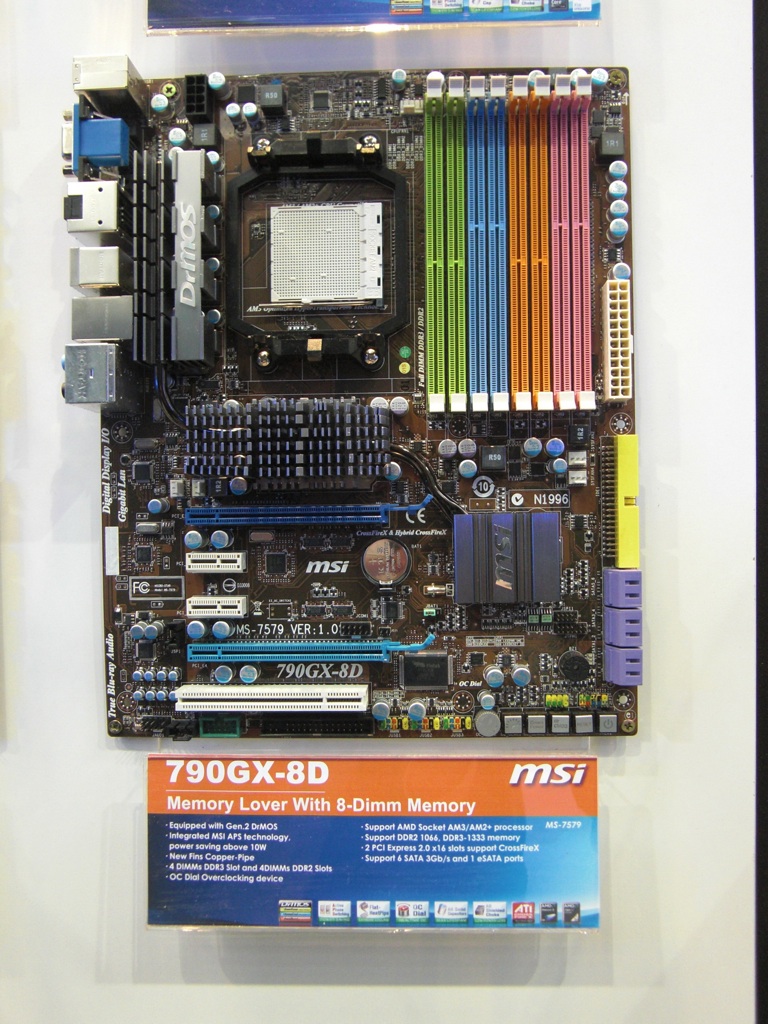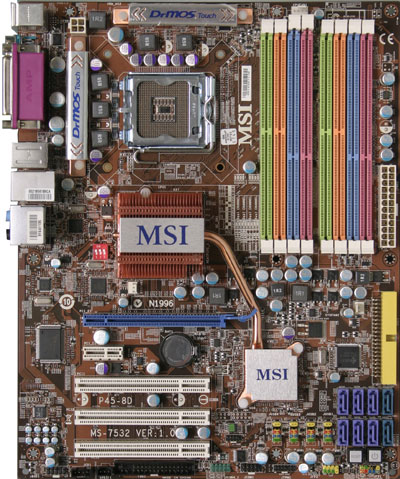MSI Unveils DDR2+DDR3 Combo Motherboard
MSI is reaching out to touch the memory lover in every gamer with two very unique motherboards: the 790GX-8D and the P45-8D. What's so special about these boards? Dual support for DDR2 and DDR3, on the same board.
MSI showcased two amazing motherboards at CeBIT: its AM3 board 790GX-8D featuring the 790GX chipset, and its socket 775 board P45-8D using Intel's P45 +ICH10/ICH10R chipset. What makes these two boards so extremely hot is their huge memory capacity, both offering four DDR2 slots and four DDR3 memory slots. Nicknamed as the "Memory Lover," both utilize MSI's power saving technology APS as well as its "DrMOS" high quality voltage converters.
Out of the two, the 790GX-8D seems a bit more versatile, compatible with AMD's AM3 processors with DDR2-1066 or DDR3-1333 RAM (using bypass) while also capable of supporting the AM2+ CPU with DDR2 RAM. Up until now, you had to choose between DDR2 or DDR3, but not both.
The 790GX-8D also allows overclockers to increase the frequencies at any time using an onboard control dial. Users can even erase the CMOS RAM with the touch of a Reset button or switch into power saving mode by pressing the "Green Power" button.
Additionally, the board offers two PCIe x16 slots, two PCIe x1 slots, and a vanilla PCI slot. Users can easily throw in a CrossFireX configuration using two cards worry-free, and it's even possible to set up a Hybrid CrossFireX configuration using the on-board graphics chipset.
As for the P45-8D, this motherboard is currently on the market, and supports Intel's 45nm and 65nm Core 2 (Extreme) processors. The board offers a 6+2 SATA/Raid for better storage. Although the board features eight memory slots, the maximum amount of memory is only 16 GB. The board has 1 PCIe x16 slot, one PCIe Gen2 (1x16) slot, one PCIe x1 slot, and three vanilla PCI slots. Unfortunately, the P45-8D doesn't support SLI nor does it offer the power saving Green Power Genie as featured on the 790GX-8D.
Although the P45-8D does offer loads of memory, it seems less appealing than MSI's AM3 Memory Lover offering. Still, consumers can pick up the Intel-based board online, retailing between $170 - $350.
Get Tom's Hardware's best news and in-depth reviews, straight to your inbox.

Kevin Parrish has over a decade of experience as a writer, editor, and product tester. His work focused on computer hardware, networking equipment, smartphones, tablets, gaming consoles, and other internet-connected devices. His work has appeared in Tom's Hardware, Tom's Guide, Maximum PC, Digital Trends, Android Authority, How-To Geek, Lifewire, and others.

